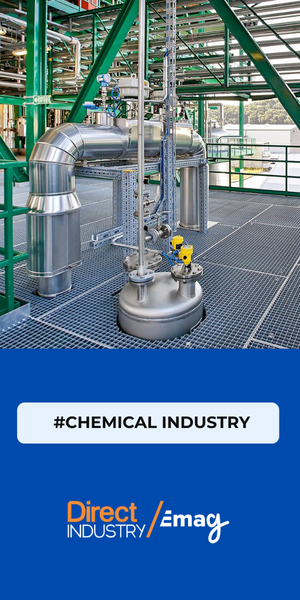Resilience has become a central theme in transportation infrastructure. From climate risks and extreme weather events to aging systems and constrained budgets, the ability to anticipate, adapt, and recover is no longer optional—it is essential. Yet, as a recent panel of industry experts demonstrated during Bentley Systems’ Year in Infrastructure conference in Amsterdam last week, resilience is about far more than engineering robust structures. It is about people, processes, and the intelligent use of data and digital tools.
From extreme weather to tighter budgets and accelerated timelines, transportation projects are under pressure to do more with less. But what does resilience truly mean in practice, and how can the construction industry embrace it—not just to recover, but to build forward?
A panel during Bentley Systems’ Year in Infrastructure conference in Amsterdam last week brought together transportation owners, engineers, and contractors to discuss these questions. The panel gathered:
- Mike Pearson from the Oklahoma Department of Transportation (ODOT),
- Andy Kaiyala from WSB,
- Rafael de Santiago from Acciona,
- and Holger Kessler from AtkinsRéalis
Resilience is About People and Preparedness
For transportation agencies and contractors, resilience begins with people. Mike Pearson, ODOT’s Digital Delivery Program Manager, emphasized that the backbone of resilient infrastructure is the ecosystem connecting people, standards, and technology.
“We have to move data through its lifecycle, but we also have to have the people to do that. Building resilience through partnerships and collaboration is just as important as the physical infrastructure itself,” he explained.
Andy Kaiyala of WSB highlighted that resilience also means clarity and reducing conflict:
“Resilience means better understanding — how do we get better clarity? How do we get transparency?”
Kaiyala explained that model-centric design and construction management—an approach integrating all aspects of a project into a shared 3D environment—can make that understanding possible.
“How many projects have you been on that ended up devolving into a downward spiral of conflict—whether between contractors, engineers, or other parties involved—where the various relationships gradually evolved into tension and disagreement? We want better, more efficient projects, but how does that affect the people who are in those jobs? They take that conflict home — we’re not machines. The idea is to reduce conflict and make people’s lives better. That’s resilience too.”
He shared a vivid example from a major project in Austin, Texas, where integrating data from multiple contracts into a shared digital environment helped prevent a costly and dangerous clash between a tunnel and roadway project.
“It surfaces the problems so that people can solve them. That’s what digital resilience looks like.”
The panel consistently highlighted that infrastructure is ultimately for people—and it is people who make infrastructure possible. Bibhuti Aryal, Senior Director, Transportation at Bentley Systems summarized it succinctly in an interview with DirectIndustry:
“Resilience can be summarized in two ways: being more prepared, and being able to bounce back quickly when something goes wrong. Preparation is the key.”
During that same interview, Burak Boyaci, Senior Director, Software Development at Bentley System added:
“Technology is an enabler, but people make the decisions. To increase resilience, you need to start with people making the best choices from the beginning.”

Doing More with Less: The Adaptive Workforce
Rafael de Santiago of Acciona expanded on human-centered resilience from an operational perspective.
“These days we’ve got tighter budgets, schedules are always tight, and there’s a lack of resources. We need to deliver more in less time and with no budget. The industry is adapting — that’s resilience.”
For de Santiago, the key is data and adaptability. Automation and AI are transforming construction, turning scarcity into opportunities for innovation.
“We don’t need to reinvent the wheel. The appetite for data has changed. You’re not just delivering a bridge or a road — you’re delivering a package. You’re also building resilient data that supports operations.”
Acciona’s journey illustrates that shift:
“We invested in a data science department that feeds every single piece of project information into a data lake. Now we use AI and analytics tools like Power BI to have full control of project progress in real time. It’s a live project — and that allows us to predict more, decide faster, and deliver better.”
Digital Tools and Data: Reducing Risk and Improving Decision-Making
Digital technologies are increasingly central to resilient transportation. From 3D modeling to AI-driven predictive analytics, tools help engineers anticipate challenges before construction begins. Burak Boyaci pointed out that the primary goal of design software is to reduce risk, not just automate tasks.
“For example, 3D models help identify clashes and problems before construction begins, avoiding difficult situations later. This directly increases resilience.”
Data integration also extends beyond the project team to communities and emergency responders. Drawing from his experience with the UK government, Holger Kessler explained that resilience strengthens when the public and local organizations understand infrastructure systems:
“When a storm happens, it just makes the town more resilient if more people know where things are, how they work, and who operates them. Every individual is part of the system, and understanding that allows faster response and recovery.”
He cited the UK’s growing transparency with public data—from flood maps to local infrastructure—as an example of resilience starting with access to knowledge.
“We now have local volunteers coordinating with the highways department through digital apps and WhatsApp groups. That’s resilience in action.”
At AtkinsRéalis, Kessler’s team has worked on a national asset register that maps underground utilities across the country.
“It’s currently accessible to utilities, but one day it might also support communities and first responders. That’s how we build resilience into the national fabric.”
Digital twins, asset registries, and AI-assisted design now help agencies leverage prior projects, reducing the need to reinvent solutions and enabling faster, more informed decisions. As Aryal noted:
“AI and digital tools allow us to leverage insights from previous projects. You don’t need to wait 100 years or recreate the wheel; you can design new infrastructure faster and more insightfully.”
Data as the Glue of Resilient Systems
A recurring theme was data integration—the ability to connect disparate systems and make information useful, accessible, and actionable.
Pearson summarized it well:
“We have a lot of discrete and unstructured data. Our systems have been in silos for years. So part of that resilience is rebuilding our systems from the ground up. We don’t want band-aids — we want to do it right the first time.”
That requires governance, patience, and an iterative approach:
“You don’t eat the whole elephant at once. You take one bite at a time. When you start understanding who needs the data and when, that’s huge.”
Building Forward, Not Just Back
Across all perspectives, one message stood out: resilience isn’t just about bouncing back—it’s about building forward. It’s about data ecosystems that connect rather than isolate, tools that enable collaboration rather than conflict, and people empowered by information rather than overwhelmed by it.
“We don’t want band-aids — we want to do it right the first time. If you do it right the first time, that’s how you really build a truly resilient system,” said Pearson.
The future of transportation resilience will depend not just on the strength of our bridges or roads, but on the strength of the connections—between people, technology, and data—that hold the entire system together.






![Image [BUYING GUIDE] How to Choose the Right Industrial Robot?](/wp-content/uploads/sites/3/Industrial-Robot-320x213.jpg)

![Image [Buying Guide] How to Choose the Right Safety Shoes?](/wp-content/uploads/sites/3/Safety-Shoes-320x213.jpg)


![Image [Buying Guide] How to Choose the Right AMR?](/wp-content/uploads/sites/3/AMR-320x213.jpg)